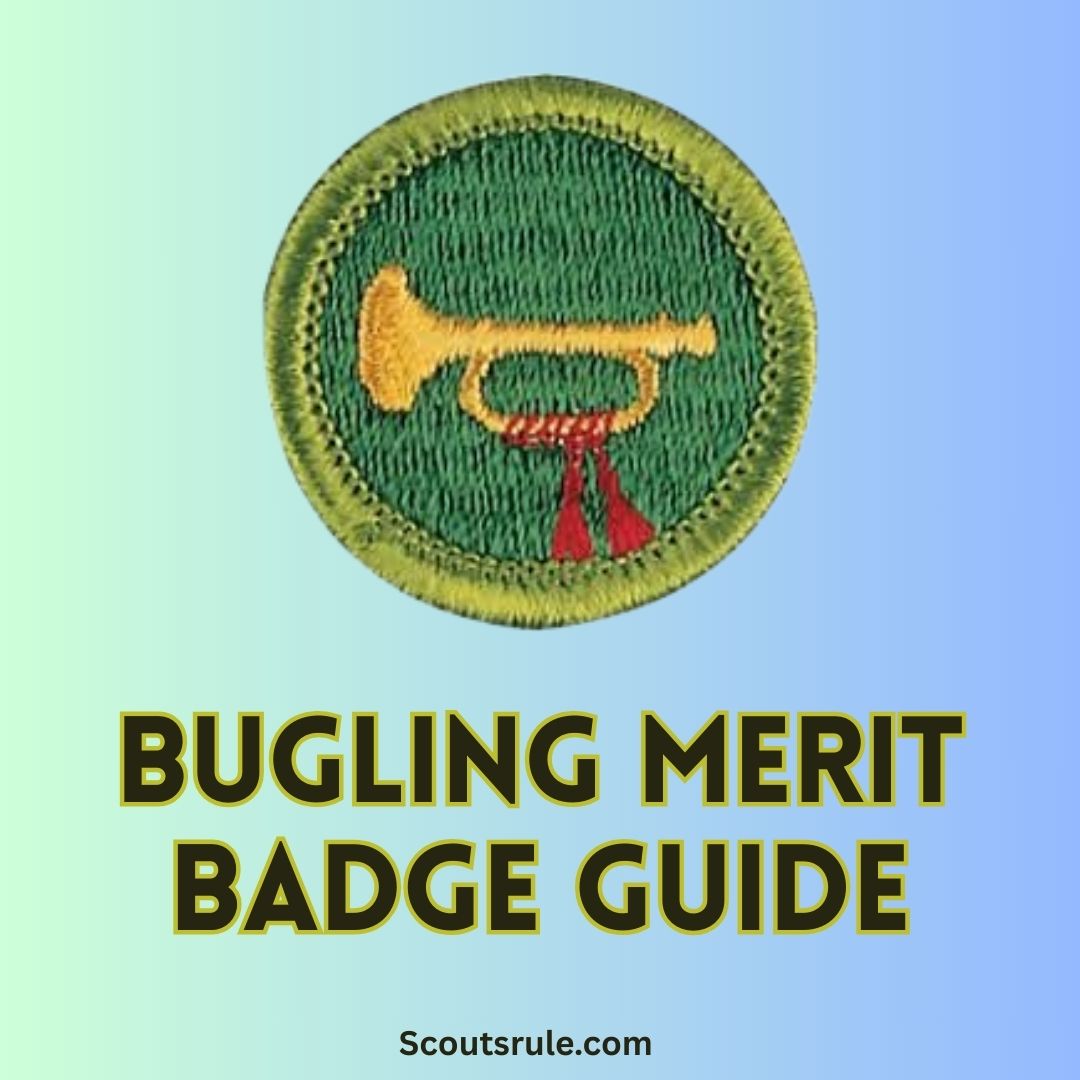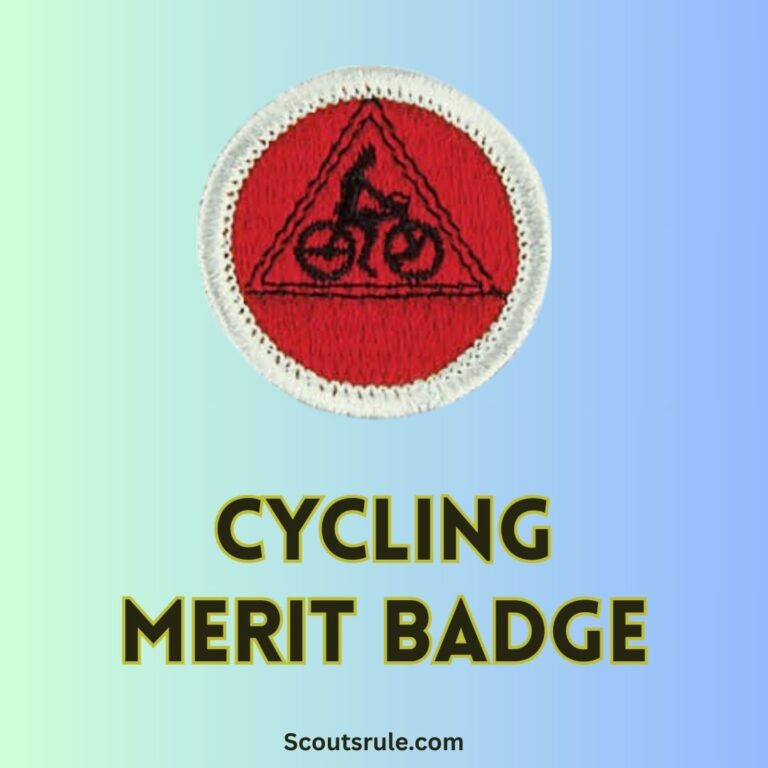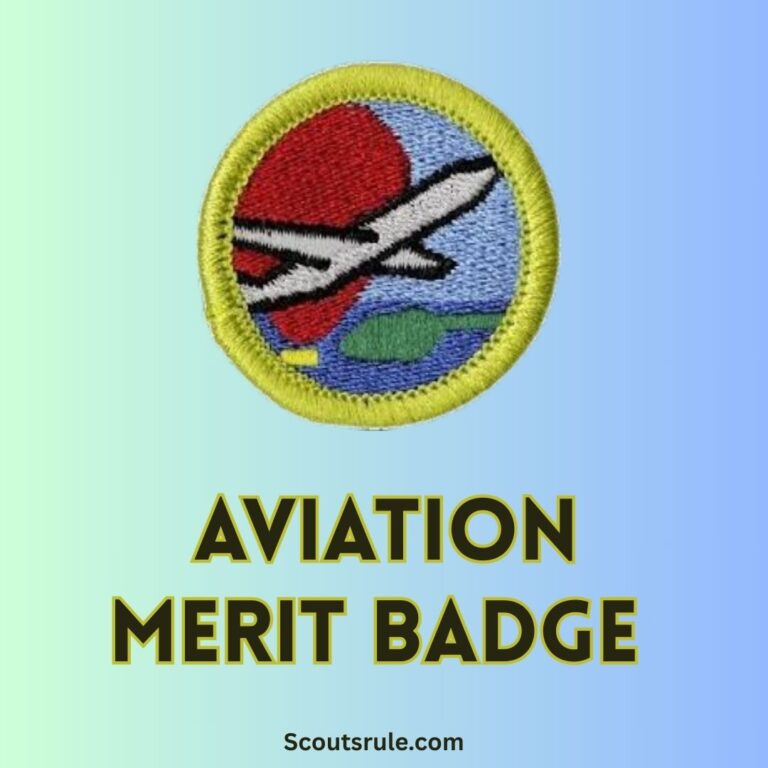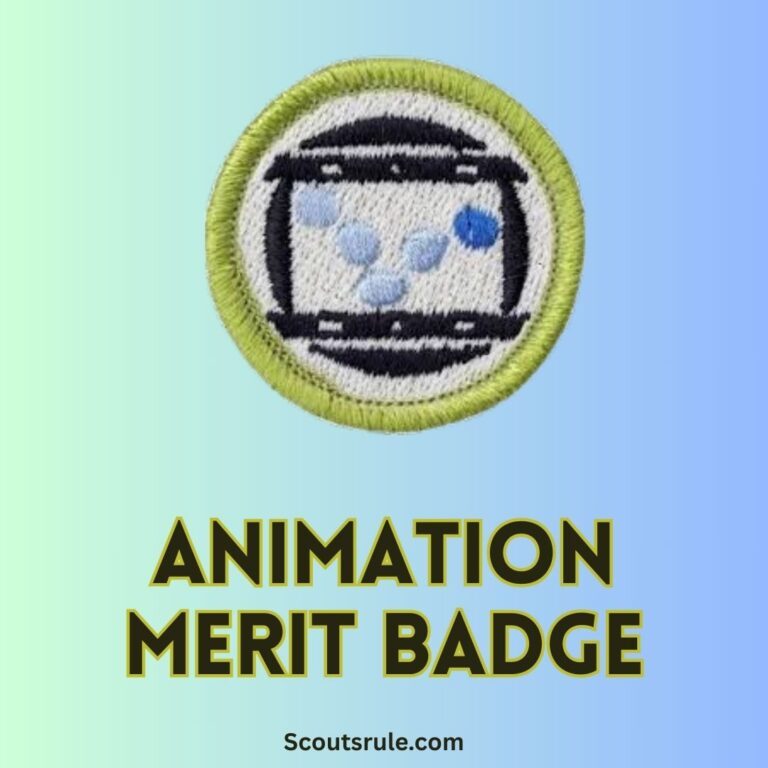
This guide is designed to help you understand the history, techniques, and responsibilities related to bugling; it outlines the key requirements, offers project ideas and hands‑on activities, and suggests strategies for documenting your progress. Always remember that this guide is a study aid intended to supplement the official Boy Scouts of America merit badge pamphlet. Be sure to work closely with your merit badge counselor and refer to the most current official guidelines to ensure your work meets local council standards.
Post Contents
- Introduction: The Tradition and Relevance of Bugling
- 2. Purpose and Objectives of the Bugling Merit Badge
- 3. Historical Background and Significance
- 4. Understanding How the Bugle Works
- 5. Bugle Calls: Description, Composition, and Performance
- 6. Bugle Care and Maintenance
- 7. Hands‑On Projects and Practical Activities
- 8. Documentation, Record Keeping, and Presentation Strategies
- 9. Additional Tips, Resources, and Future Applications
- Conclusion: Embracing the Heritage and Craft of Bugling
Introduction: The Tradition and Relevance of Bugling
Bugling is a time‑honored art with deep roots in both military and Scouting traditions. The simple beauty of the bugle lies in its design—without valves or keys, every note is produced solely through altering the breath and embouchure of the player. This lack of mechanical complexity gives the bugle a unique, pure sound that has been used historically to signal wakes, assemblies, and other key troop activities. In Scouts’ history, the bugle has symbolized leadership, discipline, and unity. Whether used to call troops to assembly, to mark the change between day and night, or as part of ceremonial events, bugling remains an important skill that connects you with a proud tradition.
2. Purpose and Objectives of the Bugling Merit Badge
The Bugling Merit Badge is designed to help you:
- Learn about the history and evolution of the bugle. Understand its origins, its role in military and scouting cultures, and how it has adapted to modern uses.
- Develop basic musical skills on a simple brass instrument. Gain proficiency in producing different harmonics, learning bugle calls, and gradually refining your tone and pitch without the aid of valves.
- Demonstrate bugling techniques and the ability to compose a unique bugle call. Show your ability to apply the principles of sound production to create calls that are clear, purposeful, and culturally appropriate for your troop or patrol.
- Understand proper care and maintenance of a bugle. Learn how to clean, store, and repair your instrument so it continues to function safely and effectively.
- Build confidence in performing for others. Whether during troop ceremonies or special events, bugling hones your ability to perform under pressure and to lead through music.
These objectives align with the core values of Scouting by promoting skill development, historical awareness, environmental stewardship, and civic responsibility.
3. Historical Background and Significance
3.1 The Origins of the Bugle
The bugle is one of the oldest musical instruments known to man. Originally fashioned from animal horns—such as those of goats or oxen—it was used by ancient civilizations for communication and ceremonial purposes. As techniques evolved, metalworking allowed for the creation of bugles with more consistent and resonant sounds. Early methods such as tube bending, developed by cultures like the Romans and Egyptians, paved the way for the modern bugle. Knowing this history provides context for the simplicity and power of the instrument.
3.2 Bugling in Military and Scouting Traditions
In military history, bugles were essential tools for conveying commands across the battlefield. Calls like “Reveille,” “Retreat,” and “Taps” were standardized signals used to coordinate troop movements and mark critical periods of the day. In Scouting, the tradition of bugling carries forward a sense of ritual, discipline, and camaraderie. Many troops assign the role of bugler during campouts and ceremonies, and mastering the bugle is seen as both an honor and a responsibility.
4. Understanding How the Bugle Works
4.1 Basic Mechanics: Sound Production Without Valves
Unlike most brass instruments—such as trumpets or tubas—the bugle has no valves, slides, or keys. Its sound is created solely by the player’s breath. The notes produced are based on the natural harmonics of the instrument’s long, coiled tube. By changing the tension of the lips (embouchure) and adjusting the airspeed, a bugler can generate a series of distinct harmonics that form the basis of bugle calls.
4.2 The Harmonics of the Bugle
The bugle primarily produces a handful of harmonics (usually four to five basic notes). Each note corresponds to a natural overtone in the vibration of the air column inside the bugle. Even though this limits the range of melodies that can be played, it also means that most bugle calls rely on familiar tunes and repetitive patterns. For many, the ability to focus on just these core notes simplifies the learning process and reinforces your understanding of how breath control and embouchure work together to shape sound.
5. Bugle Calls: Description, Composition, and Performance
5.1 Common Bugle Calls and Their Meanings
Bugle calls have served various functions over the centuries. Common calls include:
- Reveille: A wake‑up call to signal the start of the day.
- Assembly: A call to gather troops or members.
- Mess Call: A signal to organize mealtimes.
- Drill Call: Used during training or parades.
- Retreat: A call to end the day as lights dim (or “Taps” in military tradition).
Understanding the context and meaning of these calls is crucial. Each call is designed to be simple, memorable, and to evoke a particular response. You will be expected not only to perform these calls but also to explain their significance and intended effect.
5.2 Composing Your Bugle Call
One of the key requirements is for you to compose a bugle call for your troop or patrol. Consider the following steps:
- Identify a Common Activity: Choose an activity that your group performs frequently, such as assembling for meals, signaling the start of a campfire, or marking the beginning or end of a day.
- Structure and Simplicity: Since bugle calls are based on a limited set of notes, your composition should be simple, catchy, and easily learned by others.
- Practice and Revision: Experiment by playing out your draft call on your bugle. Refine the timing, tone, and rhythm until you’re pleased with the result.
- Explanation: Be ready to explain how your call will be used, why you chose its specific pace and tone, and what you hope it communicates to your troop.
5.3 Performing and Demonstrating Bugle Calls
After composing your call, you must demonstrate your ability to play it:
- Practice Thoroughly: Regular practice will ensure you have both the control and the confidence to perform your bugle call in front of an audience.
- Public Performance: Present your call at a troop or patrol meeting. This not only fulfills the performance requirement but also builds leadership and public speaking skills.
- Feedback and Reflection: Record your performance (with permission) and ask for feedback from peers, leaders, or mentors. Reflect on any adjustments needed for tone or clarity.
6. Bugle Care and Maintenance
Proper care of your instrument ensures that it remains in good working order for years to come.
6.1 Cleaning and Storage Guidelines
- Cleaning: Use a soft, lint‑free cloth to gently wipe the exterior of your bugle. Avoid using harsh chemicals that can damage the metal.
- Interior Care: Occasionally inspect the interior for dust or debris. If necessary, use a small brush specifically designed for brass instruments.
- Storage: Store your bugle in a dry, secure location away from extreme temperature changes. A padded case or a dedicated shelf helps protect it when not in use.
6.2 Routine Maintenance for Longevity
- Regular Inspections: Schedule periodic checks for dents, corrosion, or other signs of wear.
- Maintenance Log: Keep a log of when you clean and inspect your bugle. Document any repairs or adjustments made.
- Handling: Always handle your bugle with care. Avoid tossing or leaving it exposed in environments where it might be damaged.
7. Hands‑On Projects and Practical Activities
Engaging with multiple practical projects will reinforce your bugling skills and deepen your understanding of its history and function.
7.1 Project: Writing a Brief History of the Bugle
- Assignment: Research and write a short history of the bugle. Include its origins, its development over time, and its role in various cultures.
- Documentation: Submit a written report or create a poster that features a timeline and illustrations of the bugle’s evolution.
7.2 Project: Demonstrating Sound Production and Harmonics
- Assignment: Demonstrate how you produce sound on the bugle. Experiment with various embouchures and air pressures to produce different harmonics.
- Documentation: Record your practice sessions, either through a video or a detailed journal with annotated diagrams showing the relationship between your breath control and the notes produced.
7.3 Project: Composing and Performing a Bugle Call
- Assignment: Compose a bugle call specifically for your troop or patrol. Write the call down using clear notation (or record it if you prefer) and practice it until you can perform it confidently.
- Public Performance: Arrange to perform the call in a troop or patrol setting, and be prepared to answer questions about why you composed it and what the call signifies.
- Documentation: Include a copy of the composed call, photographs from your practice sessions, and a written reflection on feedback received from your performance.
8. Documentation, Record Keeping, and Presentation Strategies
Keeping thorough documentation will help you demonstrate your proficiency and learning throughout the process.
- Field Journal: Record each practice session, detailing the techniques you used, the challenges you faced, and your progress. Include dates and conditions during your practice sessions.
- Visual Aids: Take clear photographs of your bugle, your handwritten musical notation, and your performance setups. Annotate these images to explain each step.
- Portfolio Assembly: Organize all your written reports, diagrams, photographs, and any video recordings into an easy-to-navigate portfolio. A digital folder or physical binder with a table of contents is ideal.
- Final Presentation: Prepare a slide show, poster, or oral presentation summarizing your journey. Highlight key learnings, historical insights, and the significance of your bugle call composition and performance.
9. Additional Tips, Resources, and Future Applications
Additional Tips
- Practice Consistently: Like any musical skill, regular practice is essential. Even short, daily practice sessions will gradually build your control over the instrument.
- Seek Feedback: Perform in front of peers and troop leaders to gain constructive feedback. Use their comments to refine your technique and your bugle call.
- Learn from Professionals: Watch online tutorials or attend local musical workshops if available. There are many resources on bugle playing techniques and brass instrument care.
- Document Every Step: Keep detailed records of your practice, performance, and maintenance routines. Reflect on changes needed over time and how these adjustments improve your sound production.
Recommended Resources
- Books and Articles: Look for materials on brass instrument techniques, the history of bugling, and military music traditions. Public libraries or online book stores may have specialized texts.
- Online Tutorials: Websites such as YouTube offer countless videos about bugle playing, care, and maintenance. Channels dedicated to brass instruments can be invaluable.
- Merit Badge Websites: Reputable sites such as ScouterMom.com and Scoutles.com offer resources and sample worksheets designed for various merit badges, including Bugling.
- Local Music Programs: Some community centers or local music schools might offer workshops or lessons on brass instruments which can deepen your understanding and skills.
Future Applications
The skills you develop in bugling have applications beyond the merit badge:
- Scouting Traditions: Serving as your troop bugler reinforces your commitment to Scouting traditions and leadership.
- Musical Expression: Bugling provides a foundation for learning other brass instruments and for exploring musical performance.
- Cultural and Historical Awareness: An understanding of bugling’s historical and cultural significance enriches your overall appreciation of music and tradition.
- Career Opportunities: While bugling might be a niche interest, the discipline and performance skills you gain are transferable to broader areas in the music industry or public speaking.
Conclusion: Embracing the Heritage and Craft of Bugling
Earning the Bugling Merit Badge is a journey that bridges music, history, and performance. As you learn about the origins and evolution of the bugle, discover the science behind its sound production, and master the art of composing and performing bugle calls, you connect with a rich tradition that has been part of military, ceremonial, and Scouting history for centuries. Through disciplined practice, careful documentation, and public performance, you not only acquire a valuable musical skill but also build leadership qualities and cultural insight.
May your experience with bugling inspire you to pursue lifelong learning, whether on the field, in your troop activities, or even as a stepping stone to further musical exploration. Every note you play carries with it a legacy of history and a promise of future creativity—so continue to practice, lead, and share your unique voice.
Happy bugling, and may your commitment to excellence, tradition, and musical expression guide you toward a bright, innovative future!

Hi, Robin here, A former lead Scout and here I share my inspiring stories about USA Scouts, leadership, adventure, how to guides and more.






